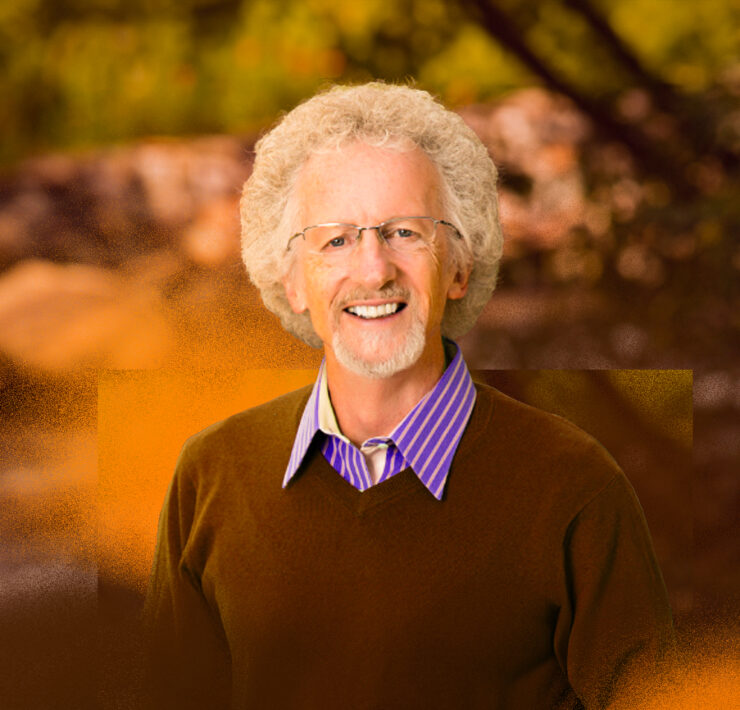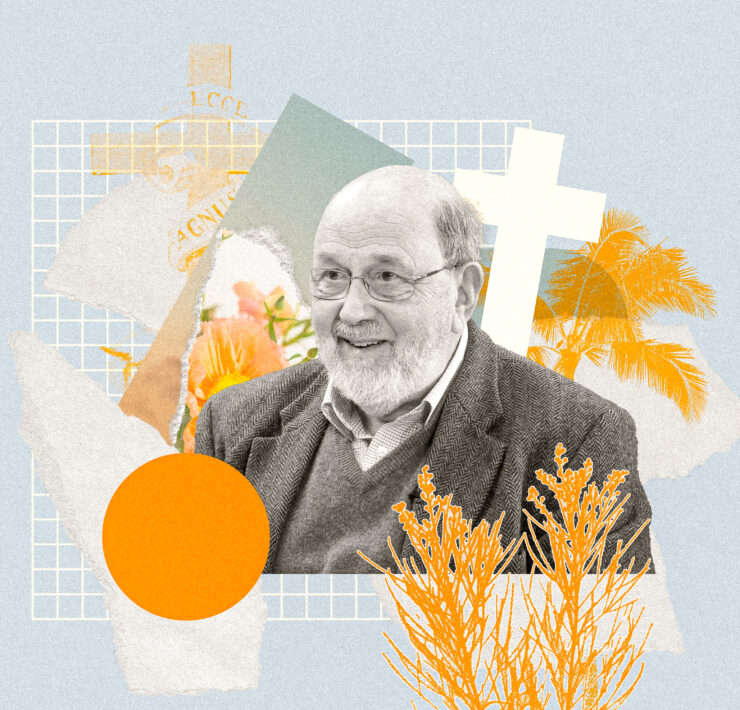“He who sings prays twice.” This beautiful maxim, attributed to the early church theologian Augustine, is used to describe the beauty of song in worship. But the phrase gestures to a deeper meaning: Through our bodies—lungs and vocal cords and muscles—our prayerful thoughts are made manifest in the world itself.
In all our various acts of creativity, we engage in this same process: letting our ideas become enfleshed in our reality. Such an activity is often considered the purview of artists, but in Christian life, every creative act can speak to this kind of enacted prayer. Cooking, gardening, singing and any day-to-day task may engage us in cultivation and creativity. Whether in formal artistry or not, whether we even recognize it or not, we are constantly surrounded by, and participating in, acts of creativity.
Creativity Helps Us See the Poetry in Everything
The whole of creation came into being through an act of creativity. Ephesians 2:10 says, “We are God’s handiwork.” The Greek word used for handiwork is poiema, from which the English word poetry is derived. Paul’s first-century readers would have readily understood the concept of poiesis and its philosophical and artistic underpinnings: When God creates, he creates poetically, creatively.
Many early Christians picked up on this imaginative imagery, describing the universe as a hymn, a glorious verse endlessly offered up in praise to God. They saw humans as miniature reflections of the universe: the macrocosm of creation finds expression in the microcosm of humanity. And unlike everything else within creation, humans are given the ability to recognize the poetry and beauty of the universe, to behold God’s “handiwork,” as the psalmist says in Psalm 19. We were made to witness God’s creativity and to respond in praise. And when we participate in creativity, we are given a unique insight into the nature of God’s work in and through all creation.
This is because hidden within the act of creativity is a unique revelation of the world as it truly is: a poem, a song, a work of art in itself. When we create—whether making music or making a delicious meal—such activities reveal that the very materials we use to create are themselves already artistic. Out of the sympathetic frequencies and natural harmonies woven into the fabric of the cosmos, we make music; in visual art, we emulate the multitude of textures, hues and patterns embedded in creation. We are made in the image of a divine artist, and when we create, we live into our human vocation: to be, as J.R.R. Tolkien says, “sub-creators,” artists who create because we are ourselves created. When we create, our eyes are opened to see God’s artistry displayed in everything around us.
Creativity Helps Take Our Faith Out of Our Heads and Put It into Our Hands
Much of modernity is profoundly Cartesian. Descartes, the 17th-century philosopher, held that there is a distinction between body and mind, such that the only way to understand reality is through the intellect. According to Descartes, our senses can’t be trusted in helping us understand the meaning and substance of existence. Descartes’ infamous quip “Cogito ergo sum” concisely states his argument: I think, therefore I am. Only our thoughts can lead us to the truth.
Contemporary Christian faith often displays a Cartesian mindset; we focus on aspects of faith that we understand. We subscribe to the notion that faith comprises what we believe. And this notion creates a crisis for us: we want to have genuine faith and an active, growing spiritual life, but so often what we know about Christianity feels desperately far from our day-to-day lived experience. Our faith is often stuck in our heads.
This is contrary to the heart of Christian faith. The ancient, unchanging truth of Christianity is not an idea, but a person—the eternal God who took on the molecules of our flesh and entered into our time and space. His human body walked dusty roads, laughed and cried, hungered and thirsted, felt the pain of iron nails pressed into palms, experienced death and was ultimately resurrected and taken up into heaven itself. The gospel is a story of profound embodiment; and that embodiment invites us to draw near to God with our senses, to “Taste and see that the LORD is good” (Psalm 34:8).
Our acts of creativity help us get our faith out of our heads and into our hands. When we create, our eyes are opened to see that the God we worship is a God who loves the world and sanctified it anew by becoming part of it Himself. Our creative activities show us that, contrary to Descartes, our bodies and minds are inextricably integrated. Creativity helps us to behold the divine grace imbued in physical things, and that encounter orients our thoughts toward praise of our creator.
Creativity Teaches Us to Hope
We especially need that encounter with grace in times like our current moment, when we cannot escape the brokenness of our world, when certainty and stability so easily slip through our fingers like sand. The difficulties of social isolation and lockdown particularly affect our wellbeing and tempt us toward despair. Perhaps that’s because they make real to us the very essence of hopelessness: feeling detached, alone and with no firm footing. At the heart of it, hopelessness is a feeling of disembodiment from the world in which we live.
When we are feeling far away from the things that give us peace, no thought or feeling can resolve that sense of detachment. What we need is reattachment to something solid, something substantial. For hope to have any staying power, it needs rooting in the world itself. But even more, we need hope that our pursuits of the good and true through the beautiful and tangible elements of our lives won’t ultimately be for nothing. Perhaps that question has been with you while reading this essay: What does it matter if we engage with the world, if we embrace creativity, since nothing lasts and everything passes away?
In the end, God will not forget what he has made or leave it to disappear. Our final destiny is not an evacuation from the world or from our senses, but a perfecting of our bodies and of the world those bodies inhabit. We await a new heaven and a new earth. In the great eschatological vision in Revelation 21, God Himself reveals the true hope that is within us, a hope sourced in His redemptive creativity: “I am making everything new!” Our future reality is secure in the one who created all things, who reconsecrated that world in his incarnation, death, resurrection and ascension, and who will creatively and generatively restore all things.
When we create—when we make and form and mold and craft—we open ourselves up to these three truths: that we are created by a master artist, and everything in the universe speaks to that divine artistry; that our faith is strengthened not only by what we know, but also by the countless points of contact in creation that reveal God’s grace; and finally, that we embrace a promise, drawing a future not yet fully understood or experienced into our present, believing that in time, all things, even the world itself, will be made new again.























